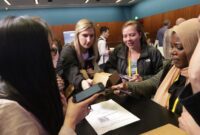Understanding NFTs: Are They Still Worth Investing In? opens the door to a fascinating exploration of non-fungible tokens, a digital asset class that has taken the art and entertainment worlds by storm. With their unique properties and ability to represent ownership of digital goods, NFTs have sparked both excitement and skepticism among investors and creators alike. As we dive deeper, we’ll examine the critical aspects of NFTs, their market dynamics, and the ongoing debate surrounding their long-term value.
The landscape of NFTs is continually evolving, driven by technological advancements and changing consumer perceptions. From art and music to virtual real estate, NFTs have created new opportunities and challenges for various industries. As we analyze their worth as an investment, it’s essential to consider both the potential rewards and the risks involved, particularly in a market that is still finding its footing.
In today’s fast-paced digital world, the way we consume information has dramatically evolved. The internet has opened up countless avenues for learning and engagement, making it easier than ever to access a wealth of knowledge at our fingertips. However, with this abundance of information comes the challenge of processing it effectively. In this article, we’ll explore the importance of mastering the art of reading and comprehension in the digital age, and how you can enhance these skills to become a more informed individual.
Firstly, let’s consider the basic mechanics of reading. While traditional reading involves deciphering written words on a physical page, digital reading encompasses a broader range of media, including blogs, e-books, social media, and online articles. The common thread across these formats is the need to engage actively with the content, which often requires different strategies than those used for reading print materials.
This shift necessitates not just reading skills but critical thinking abilities as well.
One key aspect of digital reading is the prevalence of distractions. Notifications from social media, emails, and messages can easily divert our attention, making it difficult to focus on a single piece of content. To combat this, it’s essential to create an optimal reading environment. Here are some practical tips: find a quiet space, minimize distractions by silencing your phone, and set a timer to dedicate uninterrupted time for reading.
As you read, consider adopting an active reading strategy. This involves engaging with the material by asking questions and making connections to your existing knowledge. Here’s how you can implement this approach:
1. Preview the Material Before diving in, skim through the headings, subheadings, and any highlighted text. This will give you a roadmap of what to expect and help organize your thoughts.
2. Annotate Use highlighting, underlining, or note-taking to mark key points, questions, or insights as you read. This practice not only aids retention but also encourages deeper engagement with the text.

3. Summarize After finishing a section or chapter, take a moment to summarize the main ideas in your own words. This enhances comprehension and ensures you’ve understood the material.
4. Reflect and Relate Think about how the information relates to your own life or broader context. Are there real-world applications? How does it connect with your previous knowledge or experiences?
Improving your reading comprehension also involves expanding your vocabulary. A rich vocabulary allows for a deeper understanding of texts, enabling you to grasp subtle nuances and themes. One effective way to build your vocabulary is through reading diverse materials. Engage with various genres and styles—fiction, nonfiction, academic articles, and poetry. Keeping a vocabulary journal where you record new words along with their definitions can further reinforce your learning.
Moreover, it’s crucial to practice critical thinking while reading. Instead of passively accepting information, question the author’s arguments, identify biases, and evaluate the credibility of sources. Ask yourself: What is the author’s purpose? Are there logical fallacies in their reasoning? Is the evidence presented reliable?
This analytical approach not only sharpens your comprehension skills but also empowers you to form your own informed opinions.
In addition to reading strategies, it’s essential to cultivate a habit of regular reading. Studies have shown that consistent reading improves cognitive functions and can even reduce stress. To incorporate reading into your daily routine, consider setting a specific reading goal. Whether it’s a chapter a day or dedicating 30 minutes each evening, having a structure can help you stay committed and track your progress.
Furthermore, embracing technology can enhance your reading experience. E-readers and applications like Kindle or Apple Books allow you to access a vast library of texts from anywhere. Many of these platforms also feature tools for highlighting, note-taking, and adjusting text sizes, making it easier to engage with content. Audiobooks are another excellent option for consuming literature on the go, allowing you to absorb information while multitasking or during activities like commuting or exercising.
As we navigate through the digital age, it’s important to remember that reading is not merely a solitary activity. Engaging with others about what you read can enrich your understanding and foster meaningful discussions. Join book clubs, online forums, or social media groups dedicated to literary discussions. Sharing insights and differing perspectives can offer new interpretations and enhance your overall comprehension.
In conclusion, mastering reading and comprehension in the digital age is an invaluable skill that requires intentional practice and engagement. By adopting active reading strategies, expanding your vocabulary, thinking critically, and cultivating a consistent reading habit, you will not only become a more proficient reader but also a more informed individual. As you immerse yourself in the vast world of digital literature, remember to embrace the journey of learning and discovery that reading offers.
The ability to acquire knowledge and critically analyze information is more important now than ever, enabling us to navigate the complexities of our modern world with confidence and clarity.


